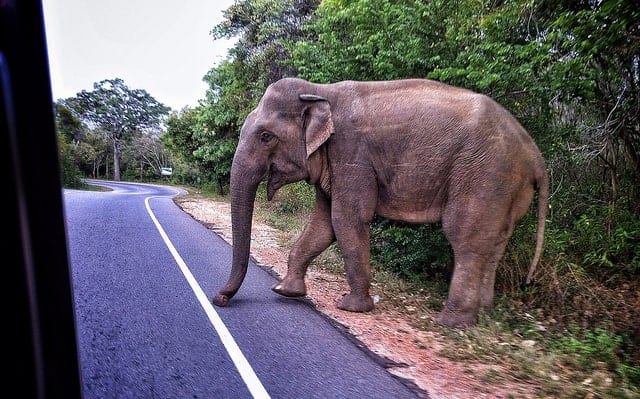It’s sad to see a wolf, deer, fox, moose, or other animal on the side of a road that has been hit by a car or truck. Sometimes, hitting an animal is unavoidable, and sometimes there’s not a lot that you can do to stay out of the way. If you are traveling this holiday season, take some tips from the Wildlife Collision Prevention Program, and stay safe when you see an animal in the road.
- Pay attention to road signs. Yellow caution signs that indicate wildlife are there for a reason. Pay attention to the signs that warn drivers about the possibility of animals crossing a highway, and slow down when you reach those areas.
- Drive slowly and according to the speed limit. Did you know that more animals are hit when the weather is nice? People tend to drive faster when the weather is in good, and this often means that collisions will happen quickly.
- Look for signs of animals. While you aren’t expected to know what a wolf track looks like, you should watch for signs of animals that could be nearby. During the evening hours, a glint or glimmer coming from the side of the road could be the reflection of a pair of eyes, quick movements during the daytime could mean that an animal is about to dart out, and often if you see one animal cross the road, others aren’t far behind. Being alert and aware — and not on your phone — can help prevent collisions with animals.
To Swerve or to Stay?
The one question that many drivers have is whether to swerve when an animal runs out in the road, or to stay the course. What should you do? It really depends on the size of the animal in your path.
Deer: If you see a small deer in the road, use your brakes, but don’t swerve. Swerving in these instances can mean winding up in a ditch. If you are not far enough away from the animal to stop completely, a collision might not be avoidable.
Moose: Moose can weigh hundreds of pounds, and you don’t want to run into a moose. If you see a moose in the road, you may want to swerve to avoid the animal. If you can’t swerve, duck as far below your dash and steering wheel as you can — moose often crush windshields and kill both drivers and passengers, so ducking down as far as possible is your best bet at survival.
Other small animals should be treated like deer — hit your brakes if possible, but don’t swerve. Unfortunately, it’s usually either your survival or the animal’s survival, and that means not swerving and hitting the animal as you slow down. Keep in mind that you can avoid a lot of collisions if you simply go at or under the speed limit.
Animals in Parking Lots
If you are traveling on rural highways during the winter months, don’t be surprised if you come across an animal or two at a rest stop, or in any other kind of parking lot. Since it’s not always easy to see what’s behind you (and animals tend to sneak up), use a backup camera to check behind your car before you back up. If you do not have a back up camera, buying a backup camera system is a good investment that could potentially save your life when it comes to winter driving and animal collisions.
Call us today for the best type of back up camera for your vehicle, and avoid unnecessary collisions.

